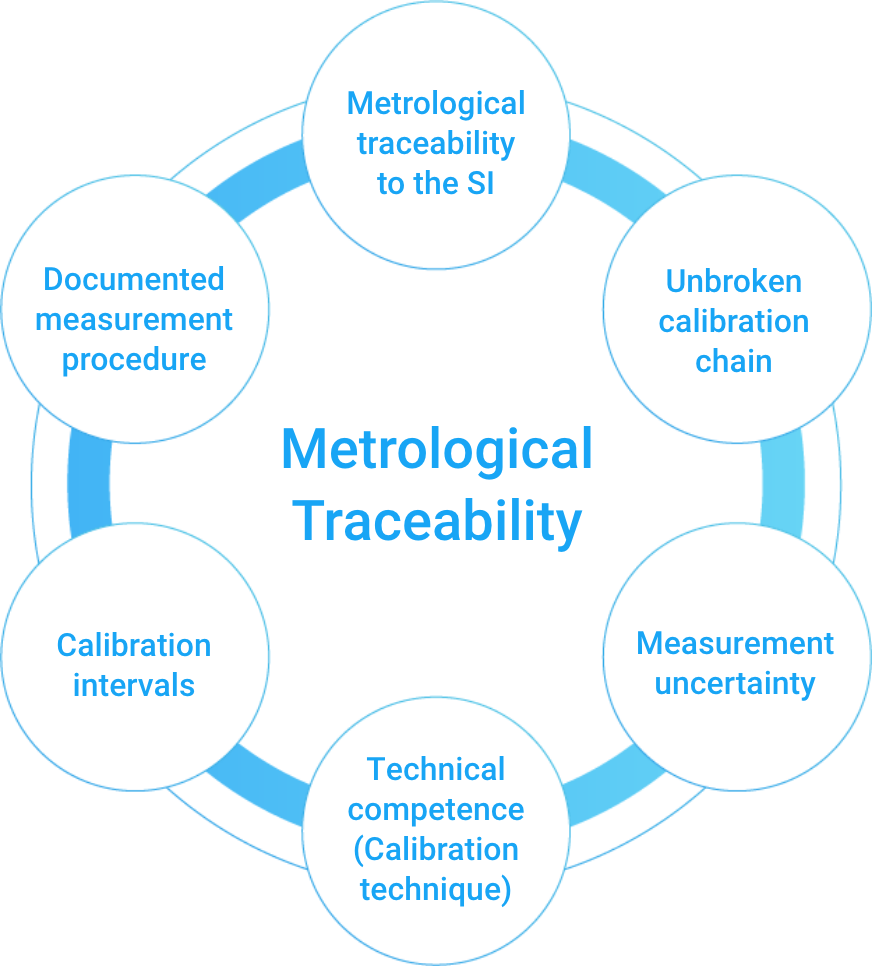Traceability
What is Traceability
It’s a mechanism to certify that measurement results are accurate.
It’s an approach to conduct accurate calibrations by ILAC MRA-accredited calibration laboratories with reference to the national meteorological standards to determine where the measurement results stand when compared with the references.
It is realized by the following elements.
- Unbroken calibration chain The property of a measurement result by which the result can be related to a reference by an unbroken and documented chain of calibrations, each of which contributes to the measurement uncertainty.
- Measurement uncertainty A method for properly evaluating the uncertainty associated with a measurement result.
- Technical competence (Calibration technique) The competence of a calibration laboratory to perform calibrations using appropriate techniques.
- Calibration intervals Calibration must be carried out at regular intervals to maintain the performance of products and equipment.
- Documented measurement procedure Measurement procedures must be properly documented, clear, reproducible and include steps to ensure reliability of measurements.
- Metrological traceability to the SI Measurement results must be traceable to the International System of Units (SI).

Meeting these elements ensures metrological traceability and guarantees the accuracy and reliability of measurement results.
In particular, metrological traceability is most reliably and reasonably achieved when calibration is performed by an ISO/IEC 17025 accredited calibration laboratory.
Therefore, a calibration certificate with the ILAC MRA accreditation symbol issued by a calibration laboratory is proof of metrological traceability.
Download Documents
-
Interpretation of Traceability and Change of Documents To Be Issued
-
Length Measurement Traceability Diagram
-
Flow Measurement Traceability Diagram
-
Pressure Measurement Traceability Diagram